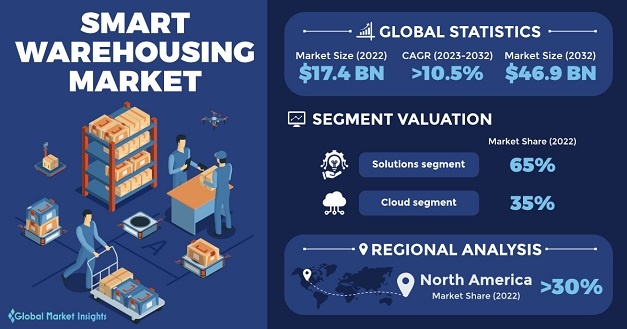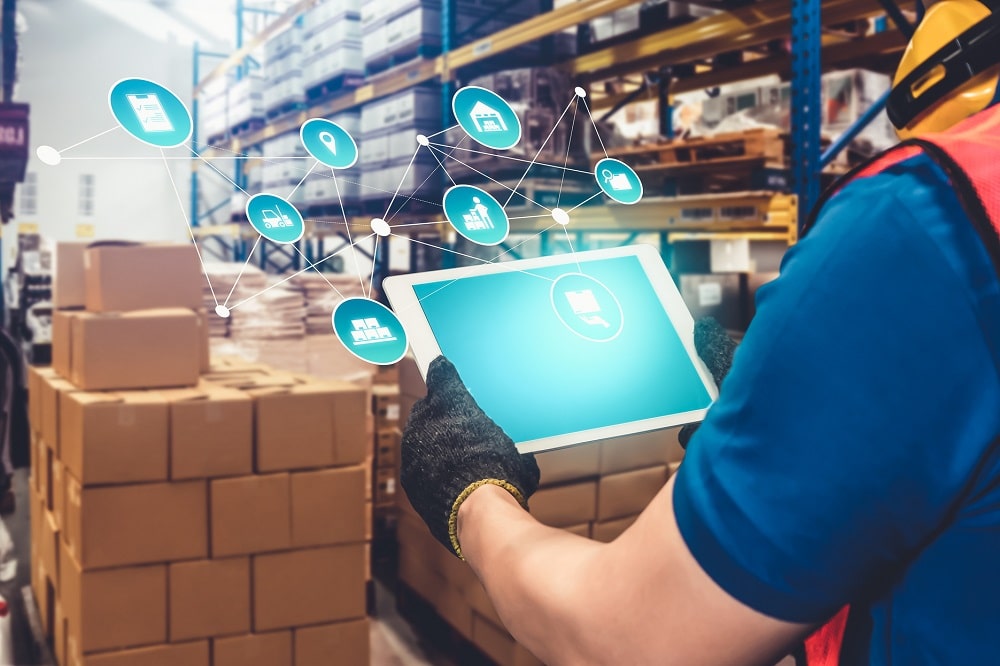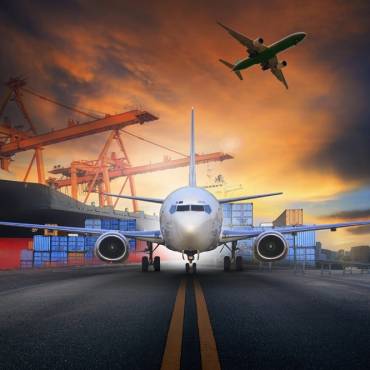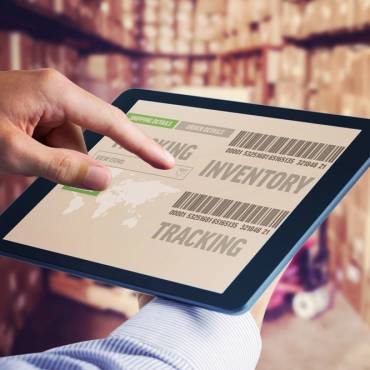Your supply chain directly impacts how efficiently you can run your business. Any inefficiencies can show up later on your bottom line. So, it’s in your best interest to take advantage of the latest technology trends to keep your supply chain running smoothly, like smart warehousing techniques.
Find seven key warehousing and supply chain trends to watch below, so you can explore what the future holds for warehousing.
What is a smart warehouse?
A smart warehouse storage facility uses machines, computers, and other electronic tools to manage everyday operations.
“Smart” doesn’t necessarily mean “fully automated,” though. Instead, the goal of smart warehousing is to find the most effective and efficient solutions for your warehousing needs with the technology you have at your disposal.


7 supply chain trends for the future
Using automated picking and sorting tools
Every warehouse typically uses a sorting system to organize new items into their ideal spots in a warehouse. When it’s time for them to be shipped out, a worker will “pick” them off the shelves for packing.
Sorting and picking are some of the most time-consuming and tedious tasks in a warehouse, and they’re especially vulnerable to human errors. As a result, many warehouse operators are taking advantage of automated sorting and picking systems.
For example, a conveyor belt system can automatically sort items and route them to different parts of the warehouse for storage. Or, an autonomous warehouse robot can pick items off shelves and deliver them to other parts of the warehouse, without human intervention. Automating the process can also lower the risk of picking wrong items, especially in combination with a well-managed warehouse management system (WMS.)
Discovering semi-automated systems
Of course, implementing warehouse robots doesn’t mean you have to erase the human element. After all, a fully automated system may have drawbacks, like high operating costs or a lack of adaptability. Instead, you may prefer implementing a hybrid system combining automation with human elements.
For instance, an autonomous robot on wheels might pick items from different parts of the warehouse and deliver them to a central packing area for human employees. This could prevent workers from rushing to opposite ends of a facility and allow them to stay in one central area, maximizing warehouse efficiency.
Implementing AI in warehouse management
AI is on the rise in the logistics world for good reason. According to Georgetown University, one case study involving AI-enhanced supply chains experienced a 35% improvement in inventory management and a 15% savings in overall cost.
One of the ways AI can accomplish this greater efficiency is by analyzing data faster than other methods. AI algorithms can extract relevant data from documents like order forms, receipts, and bookings in various file formats, so you don’t need to have a person manually log the information.
From there, you can use this data to create a “digital copy” of your warehouse to run scenarios with generative AI. For example, you might prompt the AI to determine what might happen to your supply chain if you suddenly lost your biggest supplier or switched to a competitor. You can use the results from this “digital supply chain” to inform your decision-making in the real world.
Embracing a smart warehouse management system
A warehouse management system (WMS) is a type of in-house warehouse software that tracks inventory so you’ll always know what products you have and where they’re located. A “smart” WMS takes things a step further by implementing tools like AI to track data.
For example, you can use the data gathered from a smart warehouse system to identify selling patterns and predict optimal times to reorder stock. You won’t need to manually record any of the data since the WMS can save it for you.
Staying ahead of the market with predictive AI
You can also take advantage of AI to predict trends in the market. For example, some research indicates that AI can detect warning signs of panic buying or supply chain disruptions. You can use these predictions to determine how these developments might affect your operations and adjust your business strategy accordingly.
Implementing wearable technology in warehouses
To help your human workers do their jobs more efficiently, you can also turn to tools like wearable technology, or “wearables.” Wearables designed for warehouses often feature screens and barcode scanning technology worn on the wrist, arm, or even in headsets.
This gives your employees access to real-time information, like the location of items or packing instructions, completely hands-free. They won’t need to stop and check a phone or tablet to find the same instructions.
A New England warehouse for the future
If you want a smart warehousing company to help you manage your storage and distribution needs efficiently, N&D Transportation is here for you.
At our Rhode Island warehouse, we stay on top of the latest technology trends, allowing you to pass on the benefits to your customers. We can also help you distribute items to your customers through truckload or less-than-truckload shipping. Contact us today to learn more about fulfilling your warehousing needs with us.



